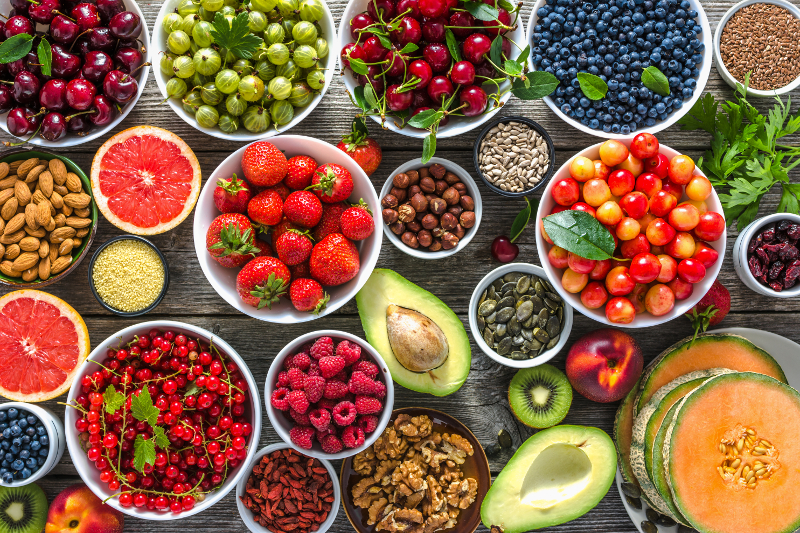Finally, the month when we welcome spring, at least in the calendar, is here! With it we start planning to do spring cleaning in the house and perhaps a cleanse for our body too. March is also nutrition month, reminding us to reassess our food choices and eating habits. Healthy eating should not be restricted to the short period of time of a cleanse, instead it should become a lifestyle where eating nutritious foods becomes a daily habit.
One of the most efficient ways to make our diet more nutritious is by including superfoods in our daily meal plans. While there is no official definition for a “superfood”, we consider these foods to be super-concentrated in health-boosting nutrients such as antioxidants, vitamins and minerals, immune-boosting polysaccharides and liver-supporting compounds to name a few.
In this article, we would like to showcase three superfoods that will help you along the way of increasing the nutritional value of your meals. Our selected foods are not from the imported, expensive type of superfoods. The foods below are budget-friendly, available at your local grocery stores and ready-to-be added to various meals.
The first superfood is the “pseudocereal” QUINOA. Although we consume it like other grains (wheat, rye, oat or rice), it belongs to the same food family as spinach, beets and Swiss chard, which is why we say it is a “pseudocereal”. Quinoa is rich in the minerals manganese, magnesium and phosphorus. In addition, it provides a full spectrum of essential amino acids, contains the antioxidants quercetin and kaempherol along with a decent amount of the B vitamin folate.
There are many ways to incorporate quinoa in your diet. It can replace rice or pasta as a side dish. You can add it to soups, salads, or prepare it as a breakfast porridge with some nuts, raisins and cinnamon sprinkled on top. Quinoa sprouts can replace lettuce in sandwiches, while quinoa flour can serve as a base in muffin or other baking recipes. It can safely be used in a gluten-free diet, however, its mild nutty flavour will be enjoyed by anyone looking for healthy alternatives to grains.
If you are ready to sub your usual coffee and bagel or muffin breakfast for a dish with less calories but higher in nutrients, then check out the yummy Raspberry Coconut Breakfast Quinoa recipe on our Instagram.
The next superfood, AVOCADO, is well known for its creamy texture provided largely by its heart-healthy monounsaturated fats which, according to some research studies, can improve the good versus bad cholesterol ratio. Vitamin B6 in avocados helps to metabolize estrogen which is important for weight control. In addition, avocados are rich in potassium (487 mg in one half avocado) and are a great source of fibre (11 – 17g, about a third of a daily requirement).
Avocado can be added to salads, used for making guacamole or delicious avocado puddings, blended in shakes, or simply spread on whole-grain bread and enjoyed along with sliced tomato and some fresh veggie sticks on a side.
The final food on our list are SWEET POTATOES, well known for their deep orange colour provided by the pigment beta-carotene, a precursor of vitamin A. Beta-carotene is an anti-oxidant, which plays a vital role in skin health, skeletal and soft tissue formation and prevention of cardiovascular disease. In addition, it promotes good eyesight, especially at low light. Sweet potatoes also differ from regular potatoes with their rich vitamin C and vitamin B6 content, in addition to their high level of blood-sugar balancing fibre.
Sweet potatoes are very versatile! You can add them to soups or casseroles. They can be spiralized and used instead of pasta, baked whole and stuffed with various fillings, sliced lengthwise and toasted, or steamed and then added to smoothies. My family’s favourite way is to spice the peeled and chopped sweet potatoes with some oregano, basil and thyme, coat them with some olive or avocado oil and roast them in the oven.
By Marianna Duba, M.Sc.
Holistic Nutritionist at Sage Naturopathic Clinic
